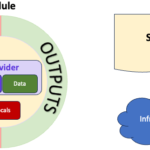
A gentle introduction to dbt
In a typical data warehouse project, data is loaded, transformed and stored into a data store using an ETL (extract – transform – load) process. Recently, there has been a shift to ELT processing, where data is first loaded into a data store (this can …
How to Send Email with SQL Server’s sp_send_dbmail
So you’re writing T-SQL code and you’ve decided that you want to send emails to customers, employees, or the general public. Perhaps you need to send order updates or low stock notifications. Stop right there. You don’t really wanna d …
T-SQL Tuesday #181: Query Store and its evolution
Query Store. This is my choice in relation to “What feature release made you say WOW!”, the subject of this SQL Tuesday. Query Store: The first release Query Store was first released in SQL Server 2016, it’s getting closer to 10 years old, but we barel …
The Paradox of NOLOCK: How Dirty Reads Can Sometimes Be Cleaner
Every SQL Server developer has heard it: « Don’t use NOLOCK in production! » But this common rule isn’t as simple as it seems. Sometimes, what seems like a bad practice can actually be the right choice. Let’s explain what NOLOCK really does in simple ter …

SQLBits is Coming Back to London in June 2025!
I used to feel bad saying that any one conference is “my favorite” because I worried that other database conference organizers might feel slighted. However, I’ve talked to many of ’em, and they feel the same way I do, hahaha, so …
Calculate a Moving Average with T-SQL Windowing Functions
The post Calculate a Moving Average with T-SQL Windowing Functions appeared first on SQLServerCentral.

JSON in PostgreSQL
Overview In this article, we will learn about JSON datatypes, functions, operators in PostgreSQL and how to use them in practical world. We’ll also go into the basics of storing and retrieving JSON data in PostgreSQL and how to make them readily access …
Introduction to Oracle Database for Database Professionals
Oracle Database, often referred to simply as Oracle, is one of the most powerful and widely used relational database management systems (RDBMS) in the world. Designed to manage large amounts of data, ensure reliability, and offer high-performance opera …
Granting Permissions in a Fabric Data Warehouse and Lakehouse
We are becoming used to being a bit lazy when granting permissions to Data Warehouses and lakehouses in Fabric. We only go to the workspace level and add the user as a viewer or member. However, this is far from a good idea. This practice not only give …
[Video] Office Hours at the Petit Ermitage in LA
I went to LA for the opening week of Somni, a gorgeous restaurant in LA, and took your questions from the rooftop deck of the adorable Petit Ermitage hotel. Here’s what we covered: 00:00 Start 00:37 MyTeaGotCold: When was the last time you …
Love Your Conference Sponsors
You probably already realize this, but I work for a company that sponsors conferences. As the editor of Simple Talk, I actually get some ability to influence and choose some of the conferences we sponsor, and even some kinds of event we do. For example …

MySQL Index Deep Dive: Clustered B-Tree Indexes
If you’re a frequent reader of the Simple-Talk blog, you’re no stranger to indexes as we’ve covered indexes in database management systems previously – in that blog, we’ve told you that indexes come in a variety of flavors including ordinary Balanced T …
Who’s Hiring in the Microsoft Data Platform Community? December 2024 Edition
Is your company hiring for a database position as of December 2024? Do you wanna work with the kinds of people who read this blog? Let’s set up some rapid networking here. If your company is hiring, leave a comment. The rules: Your comment must i …
Announcing the Holiday Sale
Our annual Black Friday sale is over, but we’ve got a simple sale for folks who couldn’t get in on that action. Here’s the lineup: Fundamentals AND Mastering$1,095per yearThe best value!Includes all of my Fundamentals of SQL Server an …

An introduction to Terraform
My first exposure to Terraform was when I started to work with data in the AWS cloud. As a Cloud Data Engineer I was expected to cover a wide range of infrastructure provisioning so I found myself having to learn rather more about cloud infrastructure …

